what would you done differently to make sure the spacecraft was decontaminated.
50 years later, 2 Georgia Tech engineering alumni reflect on their experience in Apollo 13's mission control
"Houston nosotros've had a problem" – we all know those infamous words that were transmitted from the crew of Apollo 13 back to mission control at 02:07:55:35 into the flight that took off on April 11, 1970. The mission that was later called a "successful failure" had captured the attending of the entire world, equally three astronauts were suddenly in a critical state of danger. Something had gone terribly wrong onboard the spacecraft and suddenly the mission objective speedily inverse from landing on the moon for scientific exploration to finding a manner to become these astronauts home safely to World.
At that place was much uncertainty. At approximately 56 hours into the mission on their way to the moon, the crew reported a "pretty large blindside" after a routine stir of an oxygen tank followed past a circumspection/alert alert. It seemed that the command service module was losing power and oxygen fast but at that place was no adamant reason why. It was very clear though after monitoring the situation for a brusk fourth dimension that the command service module was severely damaged and out of commission. Fortunately, the crew had already docked to the lunar module before the accident occurred so information technology was determined that the crew would have to move into the lunar module and use it as a lifeboat to get the majority of the style back abode.
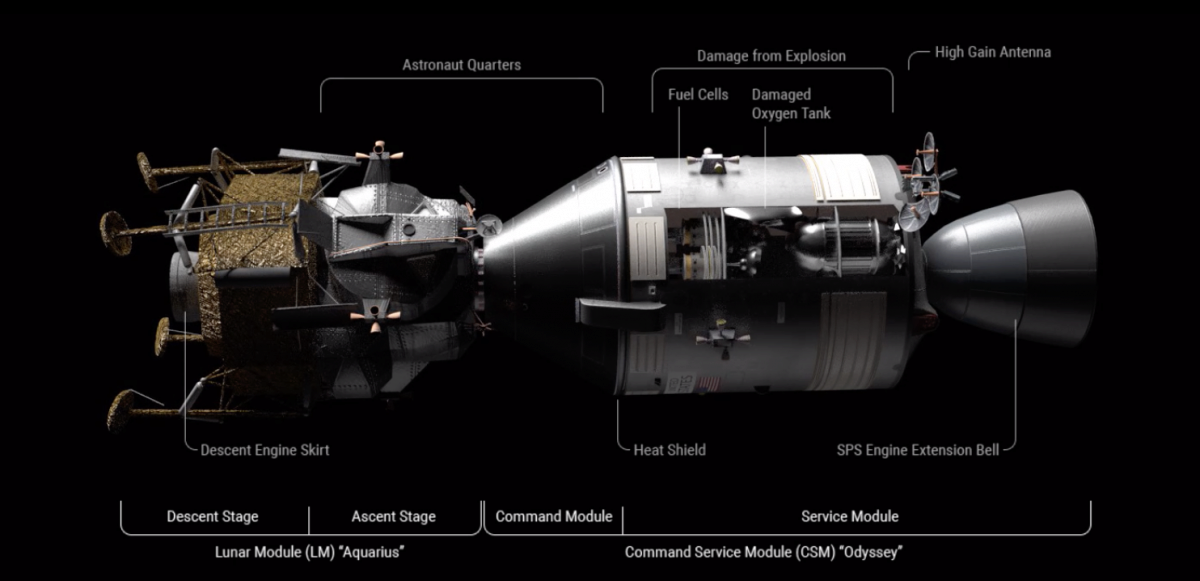
We recently talked to two flight controllers who were among the mission command squad in Houston tasked with finding a style to get these astronauts home. Spencer Gardner graduated from Georgia Tech with an aerospace applied science degree in 1967 and joined NASA soon after. He was a Flight Activity Officeholder (FAO) for the Apollo missions which involved working on on-board flight plans, crew checklists, and existence responsible for the data file that was carried on-lath past the crew. Jack Knight graduated from Georgia Tech with an electrical engineering degree in 1965. He was a Telemetry, Electrical, EVA Mobility Unit (TELMU) officer on all of the Apollo missions and monitored the lunar module electric and ecology systems.
Gardner: "I was supposed to work the lunar descent phase of the mission and I had gone off shift probably 8 or x hours earlier the accident happened. I was sitting at domicile watching television when a report came out virtually an consequence with the spacecraft. So, I called my backroom and asked what was going on, and the FAO on duty said, 'Nosotros're not going to land and yous better become some sleep because yous guys are going to have a hard time trying to re-work what's going to happen.' So, I immediately crawl into bed and about thirty minutes later I get a phone call that says, 'This is much more serious, and you lot ameliorate get over hither.' Fortunately, I lived correct beyond the street from the middle and was able to bring together the coming together that Factor Kranz had in the backroom with all those folks he pulled together to try to work the problem."
Knight: "For me the most stressful time is when y'all have a lot of uncertainty. And a lot of the uncertainty happened very early."
Gardner: "The most stressful time for me was when I first walked into mission control and all that was going on and nobody actually knew what the heck was happening for certain. But when you start working the problem and pull things together, information technology becomes less and less stressful because you're now concentrating on the trouble. We were trained to deal with that pressure and stress and concentrate on working the trouble that was presented."

Afterwards flying director Gene Kranz gathered anybody together for a meeting, it was determined that the best choice was to have the spacecraft proceed its journey to orbit the moon, then make a free-render trajectory back to earth minimizing the use of power onboard. A propulsion burn down would be needed though on the way back to speed the return to Earth by 10 hours in guild to splash down in the Pacific Body of water rather than the Indian Ocean.
Jack Knight was scheduled to piece of work his post at mission control one time the lunar module was powered up and being used for the lunar landing, however, circumstances had drastically inverse. The lunar module would now be the living quarters and control center of the spacecraft for most of the residue of the mission. The coiffure had to piece of work fast to transfer guidance data from the command module to the lunar module and shut downward the command module to go out plenty ability for reentry to Earth subsequently.
Knight: "We had two bones bug in my systems area with respect to the lunar module. The kickoff problem was carbon dioxide removal. The second problem was how long was it going to take because we had express battery power and h2o inside the lunar module. Early until we got around the moon, the flight directors actually needed to keep the lunar module at a adequately high-power mode to maintain the knowledge of where we were in infinite because the command service module was down at that indicate. The crew had copied all the data over when the lunar module was powered up and it had to stay that style for a while. Once nosotros got around the moon and made a burn down to speed things up, nosotros went into a power down. We got power down to virtually 300 watts, and at that point, consumable wise, they could make it. So, if nothing else bad happened from the lunar module perspective, we could make information technology. And so it was a matter of monitoring."
Gardner: "One of the things that my grouping was concerned with was helping guidance have the ability to sight on the stars. The crew used the lord's day in this whole process. Nosotros had to figure out where we were and confirm what the guidance organisation was saying. The other thing that nosotros were involved in was trying to set upward the passive thermal control which was important considering we wanted to brand sure the spacecraft didn't get heated or cooled also much on one side. This was very hard to do with a minimal amount of free energy expenditure and without a computer afterward the power down."
Knight: "After the power down, the spacecraft started to get cold. The control module batteries had been partially depleted, so we were very nervous nigh when we had to power back up. They had to delay power upwardly as much as possible."
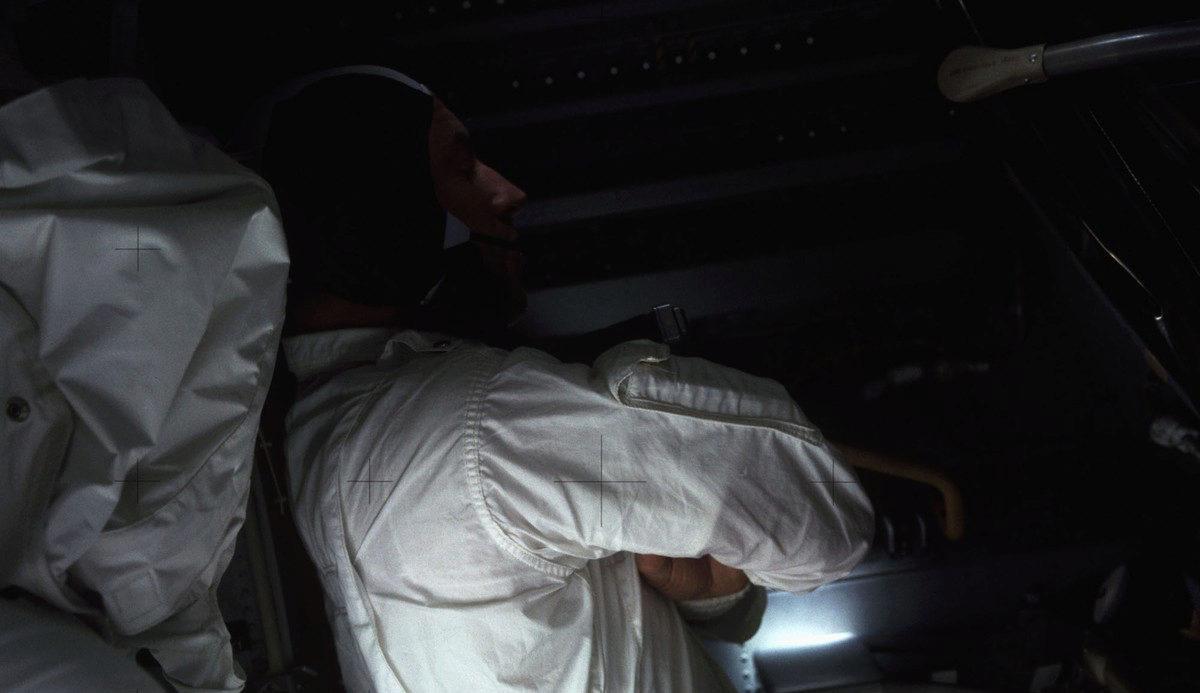
An additional problem was the astronauts now had a very express amount of drinking h2o onboard because of the blow that occurred in the service module. To conserve h2o for the remainder of the mission, each astronaut would merely potable 0.2 liters of h2o per twenty-four hour period. Astronaut Fred Haise adult a urinary tract infection during the mission probably caused past the reduced water intake and the 3 astronauts lost a full of 31 pounds among them past the end of the mission.
Gardner: "Drinking h2o was commonly produced when hydrogen and oxygen were combined to make electricity for the command module. Therefore, the astronauts would have plenty of h2o in a normal situation. Merely in this case, the h2o was gone, and the simply source of h2o was the limited supply in the lunar module."
Knight: "I think people knew immediately that the Co2 was going to be a problem – only it wasn't a 'this infinitesimal' problem. It was going to be a problem when you ran out of the lithium hydroxide cartridges in the lunar module. But they had time to work on that. They had to figure out how can we accept these square cartridges from the command module and run air through them in the lunar module."
Later a mid-grade correction burn was completed manually and the CO2 problem had been solved, the crew was at present budgeted Globe and needed to power up the command module again to prepare for re-entry. This meant the command module had to carve up from the lunar module (the lifeboat spacecraft) and the service module (where the technical failure had occurred). When the command module separated from the service module, the crew could run across through the window that an unabridged panel had been blown off the service module. It was clear that a large explosion and much damage had occurred which brought another question that was out of everyone'due south command: Was the heat shield damaged?
Knight: "The entry corridor is, if I think correctly, xl miles wide and x miles high at a sure altitude. And you need to be in that entry corridor to have them come down at the right identify at the right fourth dimension, and not either skip our or fire upward. So, until they came out of blackout, I'thou sitting in that location with my fingers crossed – I'm sure everybody else was too."
Blackout took roughly two minutes longer than normal which added to the stress of those watching on Earth, merely of a sudden the almost "beautiful" sight appeared in the heaven. 3 large parachutes had opened, slowly carrying down the control module to the Pacific Body of water, just 3.5 nautical miles from a rescue aircraft carrier - they had fabricated it safely back to Earth.
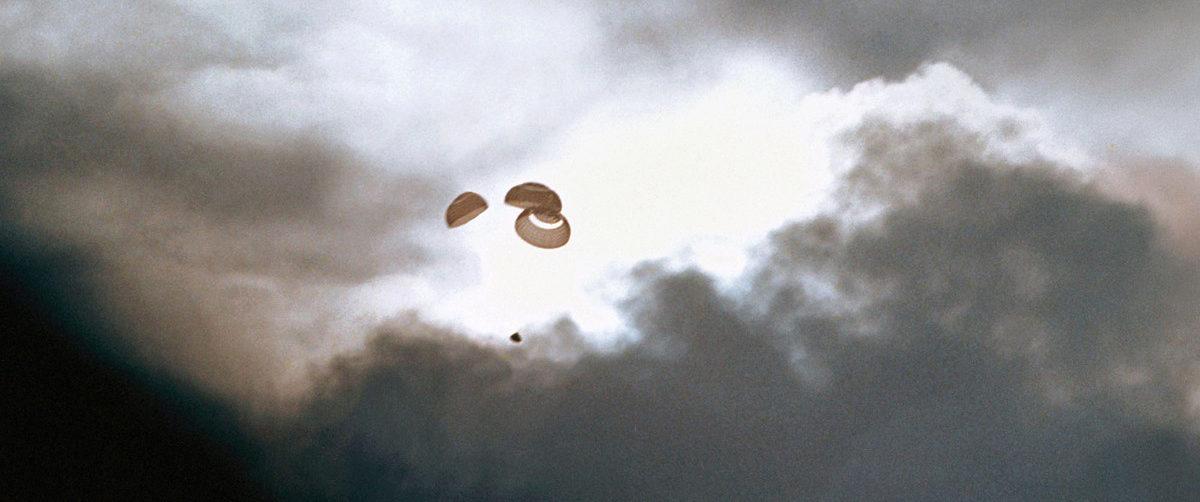
Gardner: "Yous had spacecraft that were non supposed to be together, controlled by the lunar module which was not supposed to command the stack, and you're doing not simply that long burn down but you lot're doing this mid-course correction that was substantially done manually which was unlike anything the crew had e'er practiced. And, the crew had to essentially learn to practice these things as they were doing them."
After Apollo 13, Jack Knight continued on with NASA working on the remaining Apollo missions, Skylab, ASTP, and shuttle missions until he retired in 2006. Spencer Gardner worked in mission control for the remaining Apollo missions other than 17 and eventually became a lawyer and however practices today.
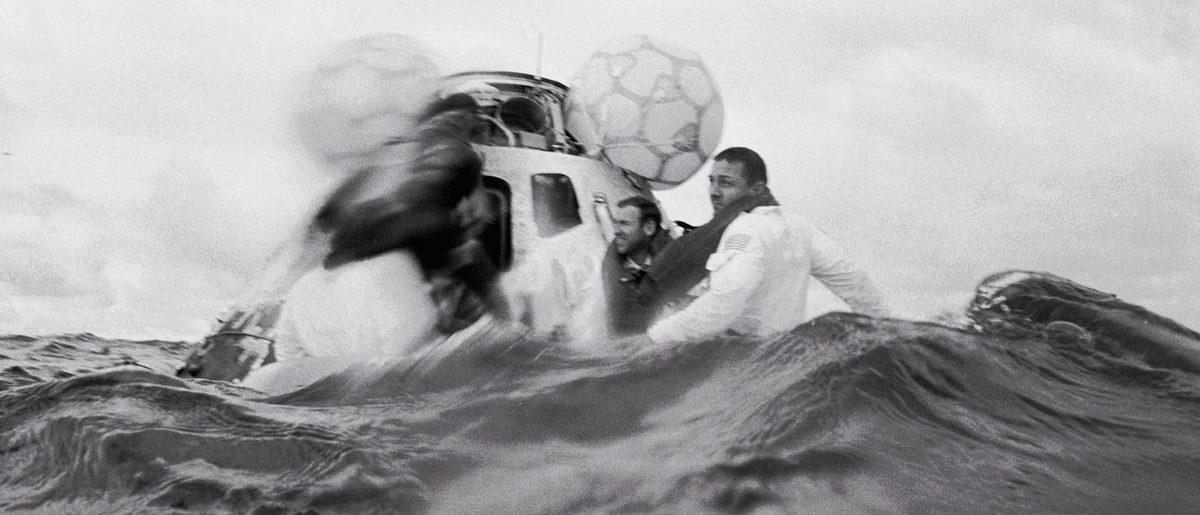
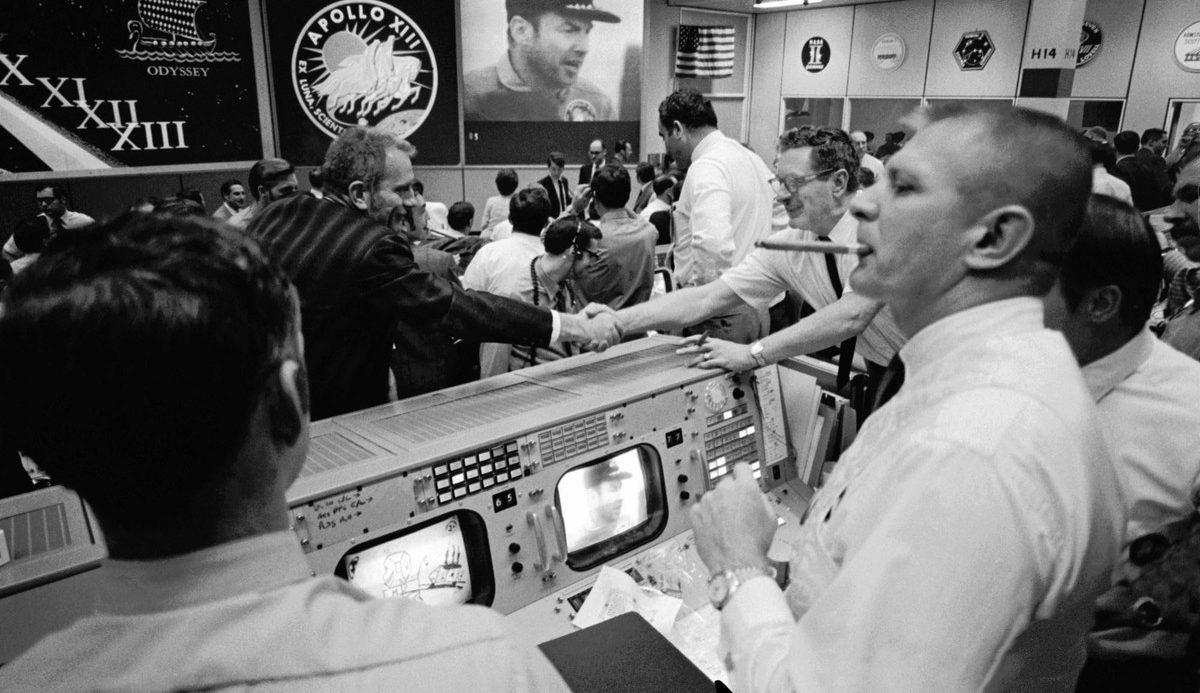
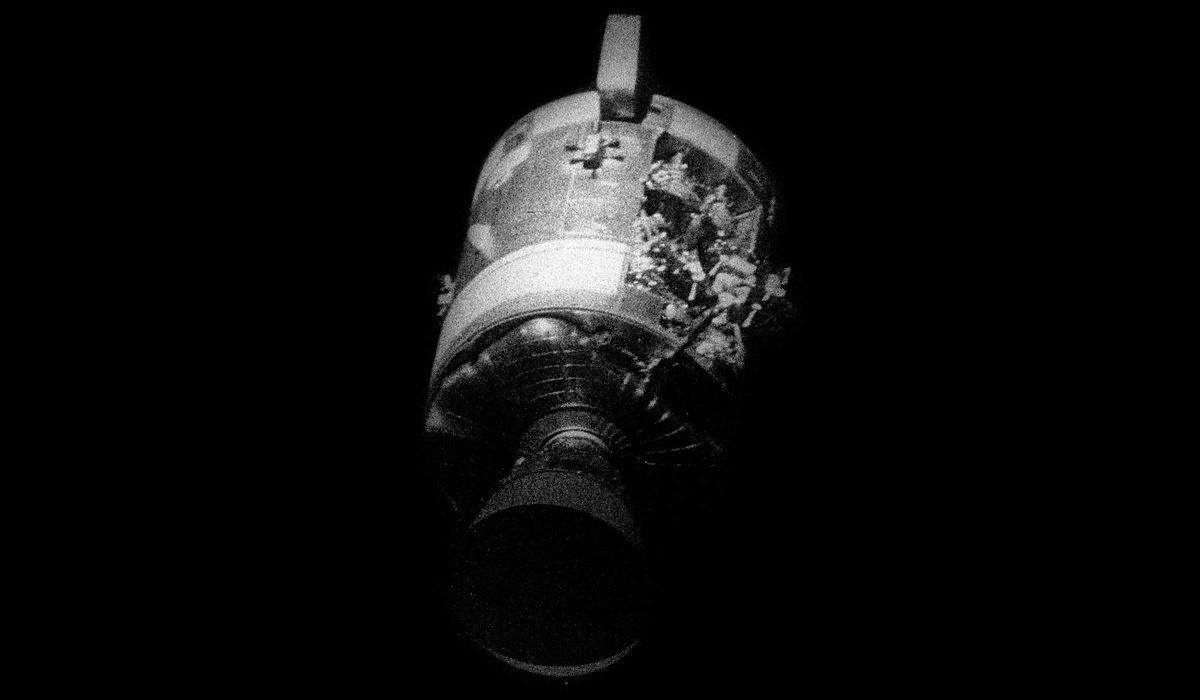
The College of Engineering in Infinite

A Legacy Not Forgotten
Georgia Tech graduate John Young remembered every bit the nigh experienced astronaut in history.
Revisit the legacy
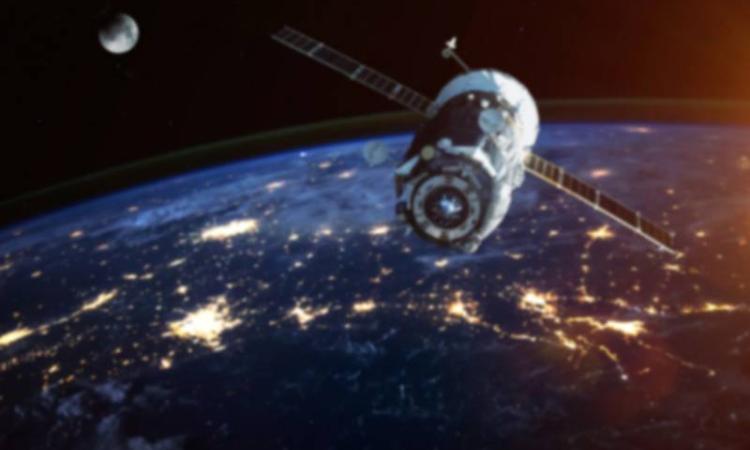
It Came From Outer Space with Brian Gunter
Brian Gunter discusses space exploration at Georgia Tech and his small satellite missions that brand information technology possible.
Space exploration at Georgia Tech
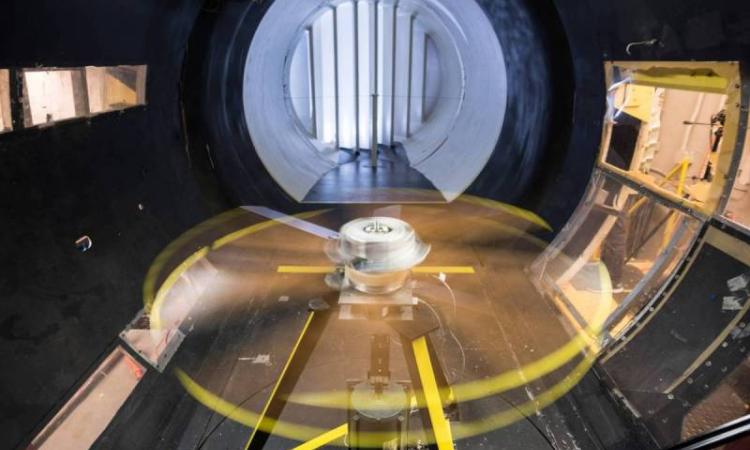
About Aerospace Engineering
The Guggenheim Schoolhouse of Aerospace Engineering boasts one of the oldest and largest aerospace programs in the state. Whether you lot want to build and fly all types of aircraft or dream of going into infinite, the School's focus on problem-solving tin propel yous into a rewarding career with many pinnacle aerospace firms and government-research labs.
Explore Aerospace Engineering science
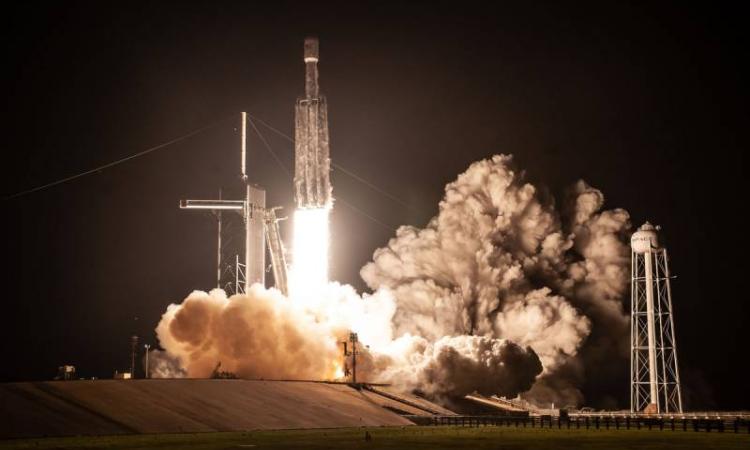
Georgia Tech's Prox-1 Satellite Journeying
Georgia Tech's Prox-1 satellite was i of 24 satellites that hitched a ride from the SpaceX Falcon Heavy, which launched at around 2:30 a.yard. on June 25, 2019.
Follow Prox-1'due south journey
Source: https://coe.gatech.edu/news/2020/04/working-out-problems-apollo-13
Post a Comment for "what would you done differently to make sure the spacecraft was decontaminated."